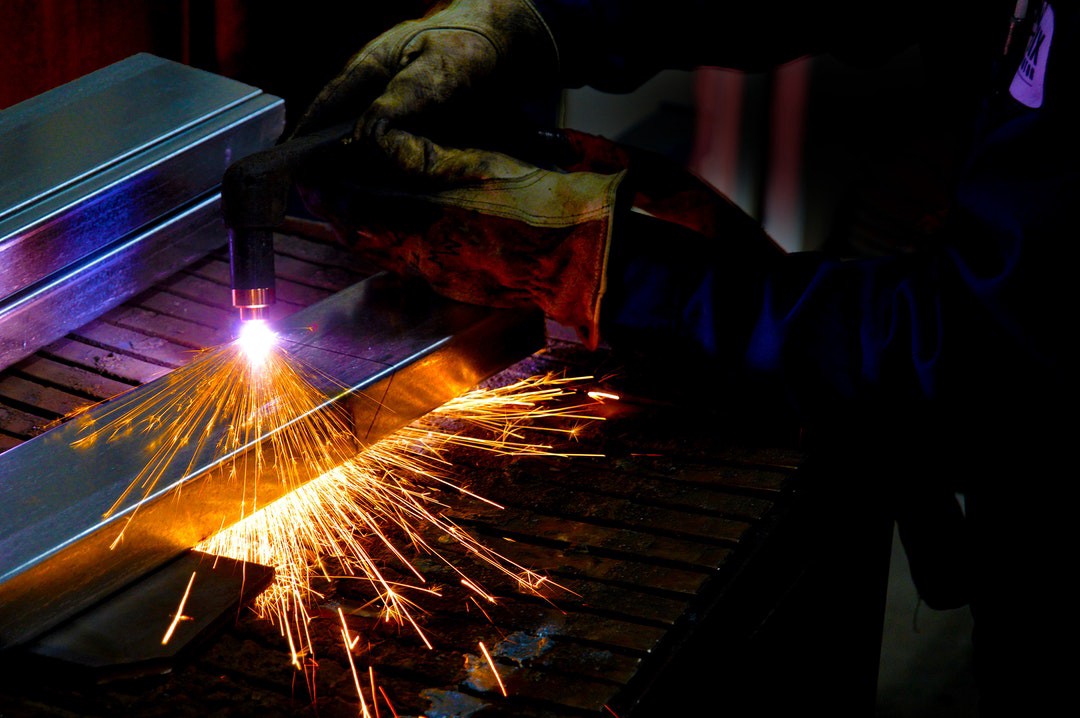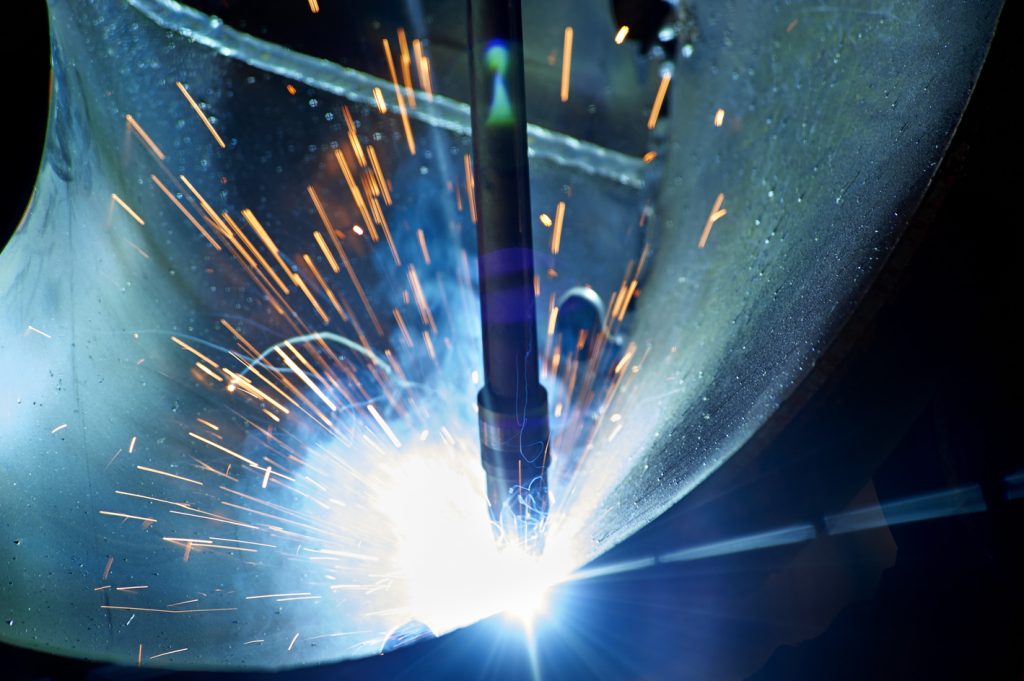How to Pick the Right Welding Inspection Racine Carrier for Your Requirements
How to Pick the Right Welding Inspection Racine Carrier for Your Requirements
Blog Article
Ingenious Approaches to Fillet Weld Assessment and Testing: Enhancing Weld High Quality and Compliance Requirements
In the realm of welding, the high quality and stability of fillet welds play an essential duty in ensuring the structural stability and dependability of different industrial components. With the constant drive for improved efficiency and compliance with stringent standards, the exploration of innovative approaches to fillet weld inspection and testing has become crucial.

Advanced Non-Destructive Screening Methods
Utilizing cutting edge innovations, advanced non-destructive testing methods play an essential role in making sure the honesty and quality of fillet welds. These methods, such as phased array ultrasonic screening (PAUT) and magnetic fragment screening (MPT), offer comprehensive insights into the weld's inner framework without triggering any damage to the product. PAUT, as an example, uses multiple ultrasonic components to evaluate the weld from different angles, offering an extensive visualization of potential issues like lack of fusion or splits.
By utilizing these sophisticated non-destructive testing strategies, weld inspectors can precisely assess the high quality of fillet welds, ensuring conformity with sector standards and laws. The ability to find imperfections early on not only improves weld top quality but additionally protects against costly rework or failings in architectural integrity, underlining the relevance of these cutting-edge screening approaches in welding evaluations.
Robotics and Automation in Examination
The assimilation of robotics and automation has revolutionized the evaluation process for fillet welds, improving performance and precision in top quality analysis. Robotics supply precise control and repeatability in examining welds, making sure dependable and constant outcomes. Automated systems can be set to adhere to details examination courses, making certain thorough coverage of welds and reducing the threat of human mistake.
Robot examination systems outfitted with sophisticated sensing units can discover and determine weld features with high precision, providing thorough information for analysis. These systems can determine problems such as fractures, lack of blend, and porosity, making it possible for punctual restorative actions to be taken. Furthermore, robotics and automation permit real-time data collection and evaluation, offering immediate comments to operators and facilitating quick decision-making procedures.
In addition, making use of robotics and automation in fillet weld evaluation improves total efficiency by decreasing evaluation times and enhancing evaluation throughput. By streamlining the examination procedure, producers can ensure weld high quality and compliance criteria are satisfied efficiently, eventually leading to set you back financial savings and enhanced item top quality.
Making Use Of Expert System for Analysis
Artificial intelligence plays a crucial role in improving the efficiency and accuracy of evaluation in fillet weld examination processes. By taking advantage of the power of AI, assessors can improve the evaluation of weld top quality and compliance requirements, bring about more exact and dependable outcomes. AI algorithms can quickly refine large quantities of data from weld assessments, spotting issues or disparities that might be challenging to relate to the nude eye. This innovative innovation enables real-time surveillance of weld high quality, allowing for instant corrective activities to be taken if any problems are found.
Additionally, AI systems can pick up from previous examination data, continually improving their ability to determine potential problems and discrepancies in fillet welds. This adaptive learning capability boosts the total quality control procedure, lowering the probability of index human error and guaranteeing that welds satisfy the required requirements. By integrating man-made knowledge into fillet weld analysis, industries can accomplish higher levels of efficiency, uniformity, and compliance in their inspection techniques.
Portable Equipment for On-Site Inspection
Enhancing area inspection performance, the adoption of mobile tools reinvents on-site evaluation procedures for fillet welds. These tools offer versatility and convenience, permitting inspectors to carry out extensive examinations in different areas, including tough or remote atmospheres. Mobile tools such as ultrasonic screening tools, magnetic bit examination equipment, and electronic radiography systems provide real-time data and high-resolution imaging capacities, enabling quick decision-making and prompt feedback on weld high quality.
One substantial advantage of portable devices is their capacity to improve assessment treatments, decreasing downtime and boosting overall productivity. Examiners can conveniently transport these tools to various work sites, getting rid of the demand for transferring heavy machinery or elements to off-site centers. Furthermore, the transportability of these devices advertises cost-effectiveness by minimizing transportation costs and increasing evaluation timelines.
In addition, making use of portable tools for on-site examination promotes proactive top quality control steps, as examiners can without delay recognize and deal with any type of prospective welding defects or inconsistencies. By integrating these cutting-edge innovations into on-site evaluation practices, welding specialists can make sure compliance with market standards and enhance weld high quality, ultimately resulting in improved architectural honesty and safety and security in numerous welding applications.

Assimilation of Information Monitoring Solution
Having enhanced on-site evaluation processes through the utilization of mobile devices, the following phase involves the seamless assimilation of information administration systems to additionally improve efficiency and data evaluation capacities in fillet weld assessment and testing. By integrating information administration systems into the inspection procedure, companies can improve data collection, storage space, and evaluation. This integration allows for real-time surveillance of weld high quality, immediate recognition of flaws, and prompt decision-making to rectify any kind of problems that might emerge during the inspection procedure.
Data administration systems play an essential duty in streamlining examination data, promoting easy accessibility for authorized workers, and ensuring data honesty and safety and security. Via the integration of these systems, examiners can create extensive records, track historic data for pattern evaluation, and improve click general procedure performance. Additionally, the combination of information management systems allows smooth interaction between different stakeholders associated with the examination procedure, fostering partnership and improving total additional hints high quality control actions. Ultimately, the integration of data management systems serves to raise the requirements of fillet weld examination and screening, ensuring compliance with industry regulations and enhancing weld quality.
Conclusion
In verdict, cutting-edge strategies to fillet weld assessment and testing have actually dramatically improved weld quality and conformity requirements. Advanced non-destructive testing methods, robotics, automation, fabricated intelligence, mobile tools, and data monitoring systems have changed the method weld evaluations are conducted. By using these technologies, sectors can make sure that welds satisfy the required quality criteria and guidelines, ultimately boosting general efficiency and safety and security in welding processes.
By using these innovative non-destructive testing strategies, weld examiners can accurately examine the quality of fillet welds, making sure compliance with market criteria and laws - Welding Inspection Racine. Portable devices such as ultrasonic testing gadgets, magnetic fragment inspection tools, and digital radiography systems provide real-time information and high-resolution imaging capacities, allowing fast decision-making and immediate responses on weld high quality
Having enhanced on-site inspection procedures through the use of mobile tools, the following stage includes the seamless integration of data administration systems to further enhance effectiveness and information evaluation capacities in fillet weld inspection and testing. Eventually, the combination of information monitoring systems offers to elevate the standards of fillet weld evaluation and testing, making sure conformity with sector laws and boosting weld quality.
In conclusion, innovative methods to fillet weld assessment and screening have substantially boosted weld top quality and conformity requirements. (Welding Inspection Racine)
Report this page